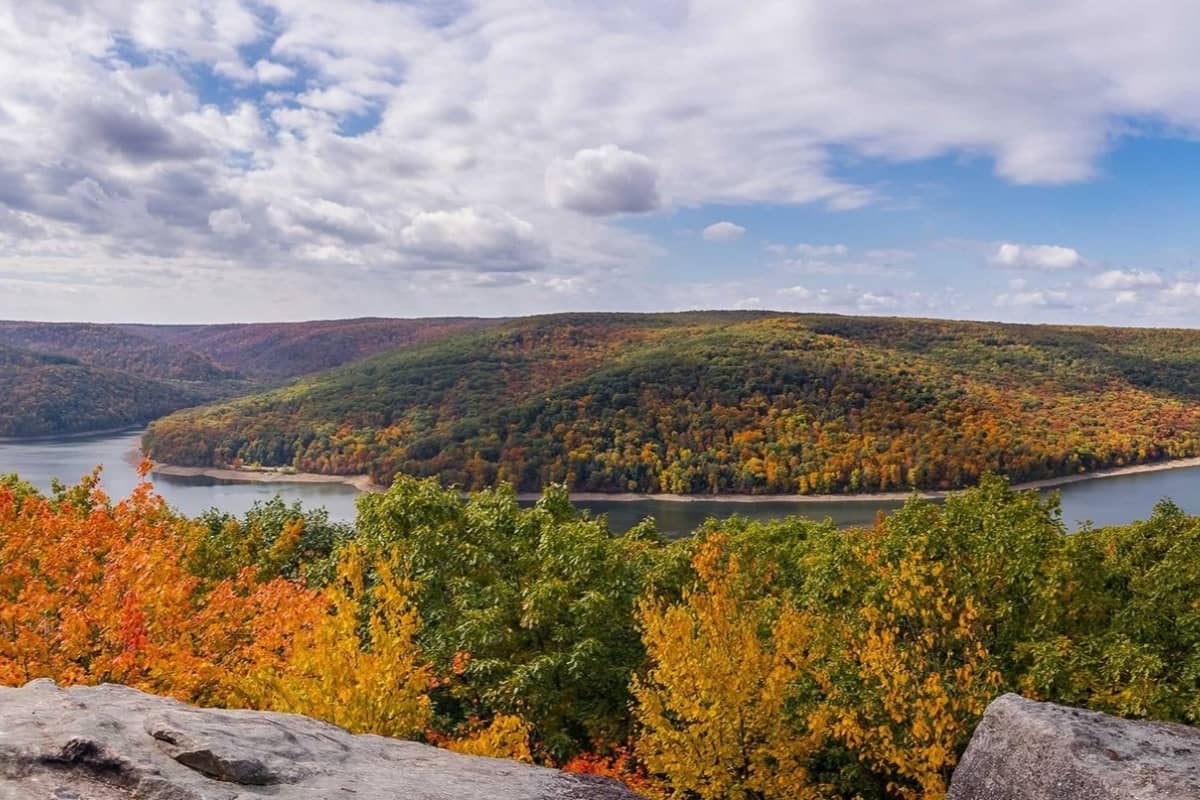The Allegheny Mountains, part of the Appalachian range stretching across Pennsylvania, Maryland, and West Virginia, are renowned for their breathtaking landscapes and dense forests. Despite their allure, these mountains hide several dangers that often go unnoticed by visitors. Many of these dangers stem from the rugged nature of the terrain, unpredictable weather, wildlife, and the isolation of many areas within the range. The following article will explore six of the hidden dangers in the Allegheny Mountains, providing insight into the potential risks and the precautions that can mitigate them.
1. Rugged Terrain and Steep Cliffs
The Allegheny Mountains feature a variety of landscapes, from gently rolling hills to steep, jagged cliffs. These rugged terrains are particularly hazardous for hikers and climbers. The constant shifts in elevation can make trails treacherous, with loose rocks and uneven paths increasing the risk of trips and falls. Some sections of the range, particularly around Spruce Knob and other high points, contain sharp inclines that are difficult to navigate. Slippery conditions after rain or snow can exacerbate these risks.
One of the most dangerous aspects of this terrain is the high number of sheer drop-offs and cliff edges. Many of these cliffs, like those found along the Allegheny Front, offer stunning views, but they also present the risk of falls, especially if visitors venture too close to the edge. Several areas lack protective barriers, making vigilance essential when exploring these spots. Additionally, visitors unfamiliar with mountain hiking may not realize how quickly fatigue can set in on steep inclines, leading to missteps or accidents.
2. Unpredictable Weather Patterns
The Allegheny Mountains are notorious for their unpredictable weather. In higher elevations, the weather can change rapidly, often shifting from calm to stormy conditions in minutes. Thunderstorms, high winds, and even snowstorms are possible, even during warmer months. Due to the mountain range’s varied elevations and deep valleys, microclimates form, making it difficult for hikers to accurately predict conditions based solely on forecasts.
These weather shifts are particularly dangerous for those caught unprepared. Flash flooding is a significant concern in low-lying valleys, where sudden downpours can turn peaceful streams into fast-flowing torrents. In some instances, flash floods have stranded hikers and caused damage to campsites. It’s essential for visitors to check the weather conditions before setting out and to be prepared with appropriate gear, including waterproof clothing and emergency supplies.
3. Wildlife Hazards
The Allegheny Mountains are home to an array of wildlife, including species that can pose dangers to humans. Black bears, while generally avoiding human contact, can become aggressive if provoked or if they feel their cubs are threatened. Encountering a bear, particularly in remote areas, can be a terrifying experience, especially for visitors unfamiliar with proper bear safety protocols.
Other wildlife hazards include venomous snakes, such as rattlesnakes and copperheads, which are prevalent in the region. These snakes often bask on rocks or hide in dense underbrush, making them easy to accidentally disturb. Snake bites, while rare, can be life-threatening and require immediate medical attention. Moreover, ticks carrying Lyme disease are common in the forests of the Alleghenies. Proper clothing, insect repellent, and regular tick checks are necessary to minimize exposure to these dangers.
4. Isolation and Lack of Cell Service
One of the most appealing aspects of the Allegheny Mountains for adventurers is the sense of isolation and serenity that comes with exploring such vast, untouched wilderness. However, this isolation can quickly turn into a hidden danger if something goes wrong. Many areas within the mountains, particularly those deep in the wilderness, have little to no cell phone reception, making it difficult to call for help in the event of an emergency.
In the absence of modern communication, even a minor injury can become a serious situation. Hikers and campers must be prepared to handle emergencies independently, carrying first-aid supplies, maps, and compasses, as well as informing others of their planned routes before setting out. Venturing off-trail without proper navigational tools increases the risk of getting lost, especially in dense forests where landmarks can be challenging to discern.
5. Hidden Rockfalls and Loose Terrain
Rockfalls are a lesser-known but significant danger in the Allegheny Mountains. The region’s geology, composed of sedimentary rock formations, is prone to erosion. Over time, rain and snowmelt can loosen rocks on slopes, leading to sudden rockfalls. These rockfalls can happen without warning and pose serious risks to those hiking in areas with steep cliffs or narrow canyons.
Even in areas without active rockfall hazards, loose terrain, such as gravel or shale, can make footing unstable. Hikers should take extra caution when navigating scree fields or areas with visibly eroded paths. Slipping on loose rocks can result in injuries, particularly when descending steep slopes.
6. Flash Flooding in River Valleys
While the Alleghenies are known for their mountain peaks, the range also contains numerous rivers and creeks. During periods of heavy rainfall, these waterways can swell rapidly, leading to flash floods. Valleys, such as the Cheat River Valley in West Virginia, are particularly prone to this phenomenon. Visitors camping near rivers may find themselves in danger as water levels rise unexpectedly.
These flash floods not only threaten campsites but can also wash out trails and make river crossings dangerous. Swift currents can sweep away hikers or vehicles attempting to cross swollen streams. It’s vital for visitors to avoid camping in low-lying areas during periods of heavy rain and to be cautious when crossing rivers, especially after storms.
Conclusion
The Allegheny Mountains offer an enticing escape into nature, but the hidden dangers within the range are not to be underestimated. From treacherous terrain and unpredictable weather to wildlife encounters and the risks posed by isolation, these mountains can be as perilous as they are beautiful. Proper preparation, including understanding the landscape, checking weather forecasts, and carrying emergency supplies, is key to a safe and enjoyable experience. By being aware of these hidden dangers, adventurers can explore the Alleghenies with confidence while minimizing the risks.






